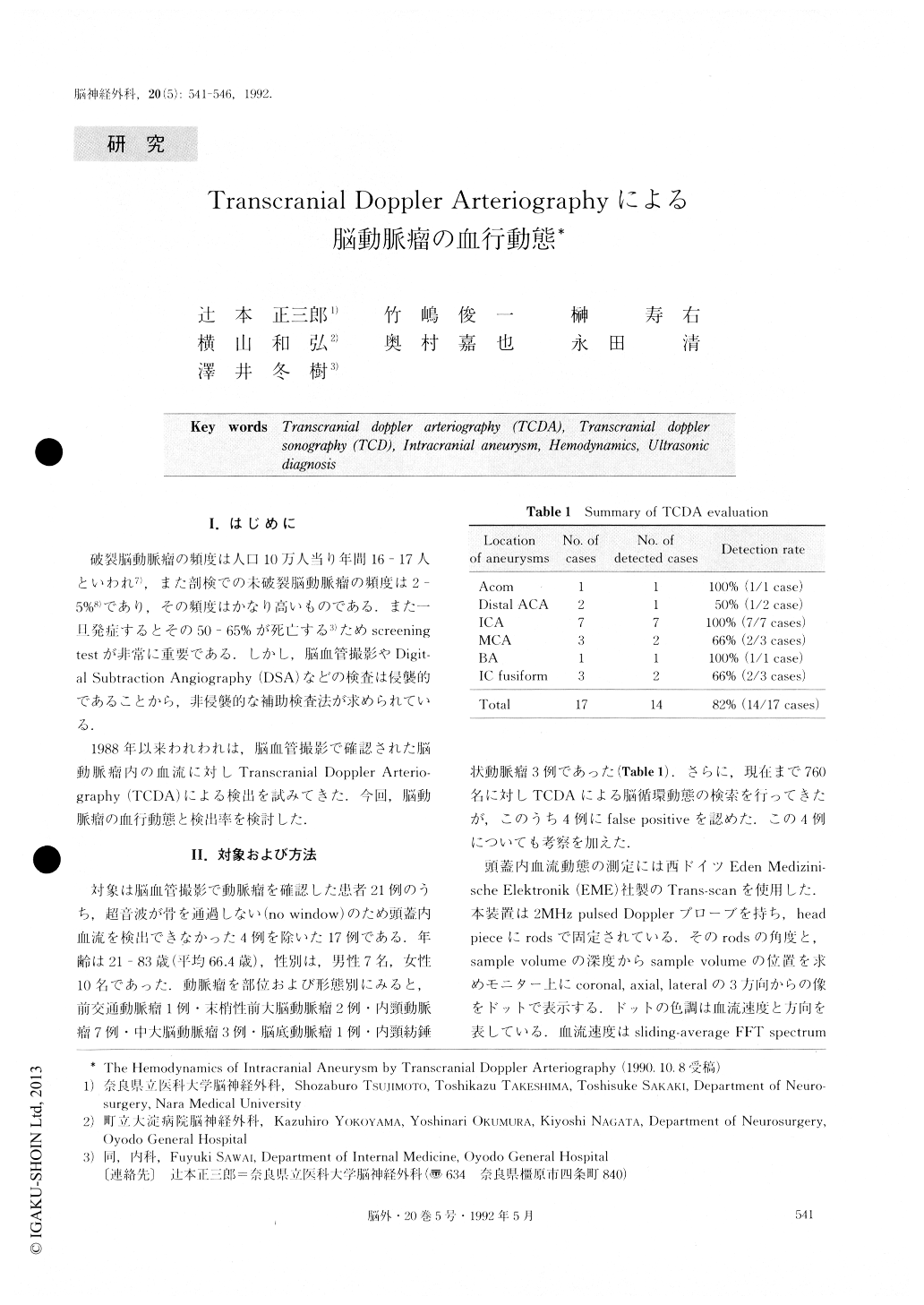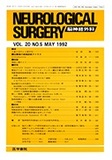Japanese
English
- 有料閲覧
- Abstract 文献概要
- 1ページ目 Look Inside
I.はじめに
破裂脳動脈瘤の頻度は人口10万人当り年間16-17人といわれ71,また剖検での未破裂脳動脈瘤の頻度は2—5%8)であり,その頻度はかなり高いものである.また一旦発症するとその50-65%が死亡する3)ためscreeningtestが非常に重要である.しかし,脳血し管撮影やDigit—al Subtraction Angiography(DSA)などの検査は侵襲的であることから,非侵襲的な補助検査法が求められている.
1988年以来われわれは,脳血管撮影で確認された脳動脈瘤内の血流に対しTranscranial Doppler Arterio—graphy(TCDA)による検出を試みてきた.今回,脳動脈瘤の血行動態と検出率を検討した.
Abstract
The use of an ultrasonic transcranial Doppler arte-riography (TCDA) technique for noninvasive diagnosis of cerebral aneurysm is described. Twenty one patients with intracranial aneurysm previously diagnosedl byconventional angiography were evaluated with Trans-Scan (EME) . Mapping image was used as a guide to identify parent artery and aneurysm. In four patients, we could not record aneurysmal blood flow because of their poor or non existent acoustic window. Good im-ages were recorded in 17 patients.
The location of aneurysms were A-com (1 case), Dis-tal ACA (2 cases), IC (7 cases), MCA (3 cases), Basi-lar (1 case) and IC fusiform (3 cases) . Two types of Doppler spectra were obtained from the aneurysmal blood flow. One was characterized by a high density zone along the base line and the other was characte-rized by a homogeneous high density zone. In both types, Doppler sound was characterized by low fre-quency sound. The low frequency sound reflects the turbulent flow in the aneurysm.
The pattern of Doppler spectra obtained from ordi-nary arteries was characterized by a high density zone along the descending limb of the envelope. Doppler sound is characterized by high frequency sound. A homogeneous spectral pattern was obtained in both aneurysms and ordinary arteries. But it was possi-ble to differentiate them by Doppler sound. Conse-quently to be able to hear Doppler sound is very impor-tant. We were able to detect fourteen of seventeen aneurysms (A-corn 1/1, Distal ACA 1/2, IC 7/7, MCA 2/3, Basilar 1/1, and IC fusiform 2/3). The rate of de-tection was 82 percent. Aneurysm size ranged from 5mm × 4mm to 16mm × 18mm. The maximum diameter of the smallest aneurysms we could detect was 5mm in 4 cases. We expect TCDA, to become a good means, for a noninvasive examination to detect intracranial aneurysms.

Copyright © 1992, Igaku-Shoin Ltd. All rights reserved.


